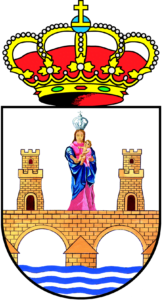Sightseeing
Hacer Turismo en Benavente, significa perderse en la Historia. Benavente es ciudad de tradiciones además de encrucijada de caminos. The city “of the count-Dukes” as it is known, breathes life and the journey through its streets is going to make you fun and rewarding. En el trayecto el paseante podrá admirar una variada muestra de edificios y rincones de todos los estilos y épocas.
Monument to the Bull Enmaromado
Church of Santa Maria del Azogue
Teatro Reina Sofía
Monument to The Veguilla
Church of St. John of the Market
Home Alone
Hospital of the Mercy
La Mota castle (Torre del Caracol)
Botanical garden Meadow of the Hens
To know more about Tourism in Benavente ...
We wanted to give an overview of Benavente without getting lost in details since this is a Website designed to promote the heritage inmtaterial of Benavente: its Festivals and traditions.
To learn more about Benavente and its History, you can go to the website of Tourism of the Municipality of Benavente or contact the Office of Tourism of Benavente in the following address where you will be able to know in detail our great little city.

